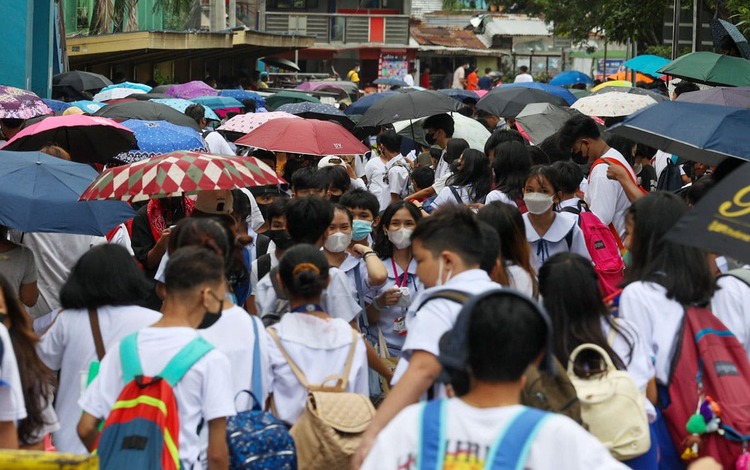As the scorching heat of summer intensifies, several regions across the Philippines have taken proactive measures to ensure the safety and well-being of students. With the state weather bureau issuing warnings of dangerously high heat indexes, local authorities have decided to suspend on-site classes on Tuesday, April 23.

The decision comes as the forecast indicates a potential heat index ranging from 42 to 52 degrees Celsius, posing significant health risks such as heat cramps, heat exhaustion, and heat stroke, particularly with prolonged exposure to such extreme temperatures.
Here is a rundown of the areas where face-to-face classes have been suspended:
Metro Manila:
- Pasay City: All levels are suspended until April 24, encompassing both public and private educational institutions.
- Quezon City: On-site classes for public schools are suspended across all levels.
Calabarzon (Cavite, Laguna, Batangas, Rizal, Quezon):
- General Trias City, Cavite: Suspension applies from kindergarten to senior high school for both public and private schools.
Ilocos Region:
- Dagupan City, Pangasinan: Preschool to senior high school classes in public schools are suspended.
Cagayan Valley:
- Alacala, Cagayan: Suspension covers prep to high school for both public and private institutions.
- Gattaran, Cagayan: All levels are suspended in both public and private schools.
Central Luzon:
- Angeles City: On-site classes are suspended for all levels in public schools.
- San Fernando, Pampanga: Suspension applies to all levels in both public and private educational facilities.
Bicol Region:
- Milagros, Masbate: Primary to secondary classes are suspended in both public and private schools.
- Albay: On-site classes are suspended across all levels in public and private institutions.
Zamboanga Peninsula:
- Zamboanga City, Zamboanga del Sur: Suspension extends to all levels in both public and private schools.
These proactive measures underscore the importance of prioritizing the safety and well-being of students amid extreme weather conditions. While the suspension of on-site classes may disrupt the regular academic routine, it is a necessary step to mitigate the risks posed by the sweltering heat.
Instead of traditional classroom settings, educators are encouraged to explore alternative modes of learning, such as online classes or asynchronous learning activities, to ensure continuity in education despite the temporary suspension.
Parents and guardians are reminded to take precautionary measures to protect their children from the adverse effects of high temperatures, including staying hydrated, wearing appropriate clothing, and avoiding prolonged exposure to the sun during peak hours.
By prioritizing safety and health, authorities aim to minimize the risk of heat-related illnesses and ensure a conducive learning environment for students across affected regions.
